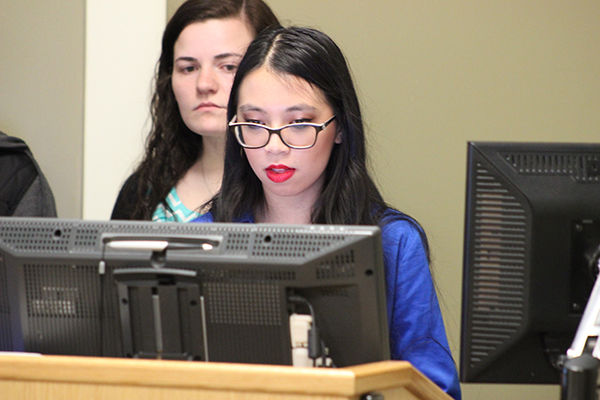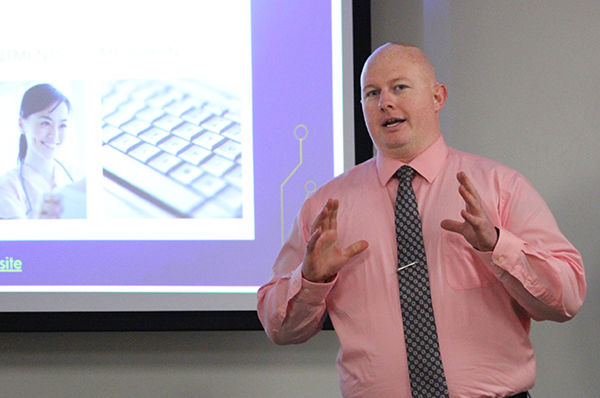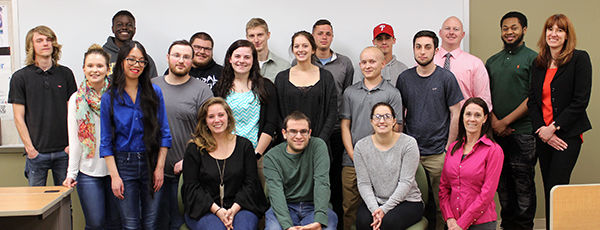
Penn State Mont Alto student Emily Lautenbach describes the applications her team developed for a joint project with Health Policy and Administration and Information and Science Technology students during the 2018 spring term.
MONT ALTO, Pa. ― Success isn’t just about what you know. It’s also about how to apply what you know to find solutions and solve problems.
During the 2018 spring term, Penn State Mont Alto students majoring in information science and technology (IST) and health policy and administration (HPA) collaborated to develop user-friendly systems for health care organizations. Through a joint project, they not only deepened their knowledge in their respective fields but also learned how to communicate their ideas more effectively, to think creatively, and to work collaboratively.
“HPA students played the role of health care executives needing an information system for their organization and IST students worked to develop the system,” said Tatyana Zidarov, Penn State Mont Alto lecturer in information technology.
The classes were divided into six teams with both IST and HPA students. Over the course of the semester, the teams met face-to-face six times to collaborate and work together. The first objective was to take information provided by the HPA students about the needs of their fictitious organizations and identify the system requirements and tasks the system would need to perform.
“It is very likely that HPA students will one day be part of a selection team for software to facilitate business operations within an organization,” said Michelle Pittman, Penn State Mont Alto lecturer in health policy and administration. “These software systems can include anything from data analytics, patient portals, electronic health records, billing and reimbursement, and patient tracking. Information technology can be facilitated and utilized in every department function of a health care organization,” she said.
Once the requirements were identified, the IST students developed interactive prototypes of the user interface systems and performed usability testing of their prototypes with their HPA counterparts. Based on feedback received, the IST students revised their prototypes. At the end of the semester, each team showcased their project and prototypes with both classes.
The teams presented a wide variety of solutions. “The thing I find most fascinating about the project is that each team developed a prototype for a completely different system, and each prototype interface is different,” said Zidarov. “We had systems ranging from websites to applications, including an iWatch app. I was really impressed by what they did."
IST student Emily Laubentach’s team developed a website with features to include health records and forms, a way to book appointments with secure messaging for healthcare providers, and a pharmacy section that includes patients’ prescriptions and a way to refill them. The group also developed a mobile app, phone app, and smartwatch app.
“The most challenging thing was the development of three distinct applications and tying them all together,” said Lautenbach.
“My primary takeaway from the class was that working in tandem with the HPA students was an interesting opportunity for collaboration between individuals with distinct academic and professional backgrounds,” she said.
Lautenbach’s teammate agrees. “Working throughout the semester on this project allowed us to be exposed to a practical scenario of how a project would work in any large organization,” said HPA student Chris Seery.
“I believe the biggest impact of this collaboration project was the way the HPA and IST students were able to bring two different styles of reasoning and rationality together to deliver an amazing product. A product that not only looks nice but also has the potential to improve the quality of health for an entire community.”
See more photos here.

